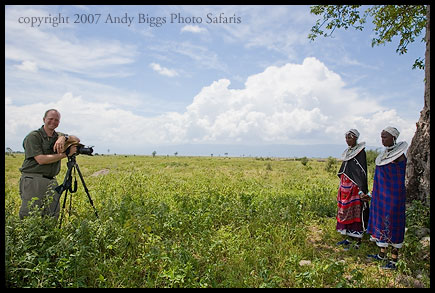Photo of the Day
 Wednesday, February 28, 2007 at 07:39AM
Wednesday, February 28, 2007 at 07:39AM 
I am an avid adventurer, conservationist, teacher, and outdoor photographer whose photography celebrates the African landscape and its rich wildlife, people, and culture. My photographic safaris allow my travelers to not only enhance their understanding of photography, lighting, and wildlife, but to develop a life-long admiration for Africa ‘s beauty and culture.
Banana Republic recently used my photographs as the cornerstone of their Urban Safari campaign, and my images were seen in all 750 stores around the globe, as well as in their billboards, catalogs and annual report. I was also the winner of the BBC Wildlife Photographer of the Year in the ‘Wild Places’ category in 2008 and a highly commended in the ‘Creative Visions of Nature’ category in 2007.
I launched Gura Gear in 2008, in an attempt to deliver lightweight camera bags to the market. I was looking for a lightweight camera bag to hold all of my photographic gear, and there was nothing desirable on the market that suited my needs. After spending 2 years with many prototypes, the Gura Gear Kiboko bag was born. More products are now available on the Gura Gear web site.
 Wednesday, February 28, 2007 at 07:39AM
Wednesday, February 28, 2007 at 07:39AM 
 Friday, February 23, 2007 at 03:11AM
Friday, February 23, 2007 at 03:11AM September 1 - 10, 2008 Namibia Itinerary
Gallery I images from April 2006 Namibia safari
Gallery II images from April 2006 Namibia safari
 Thursday, February 22, 2007 at 08:28AM
Thursday, February 22, 2007 at 08:28AM  Thursday, February 22, 2007 at 08:22AM
Thursday, February 22, 2007 at 08:22AM The Canon Japan EOS-1D MK III web page
 Monday, February 19, 2007 at 04:01PM
Monday, February 19, 2007 at 04:01PM Here is a quick shot taken at Karen Blixen's (Out of Africa author) house outside of Nairobi, Kenya in July 2002. I had a beard back then! Leslie and I were finished up a 6-week backpacking trip throughout Tanzania and Kenya, and this was our last day in Africa that summer.

 Saturday, February 17, 2007 at 09:13AM
Saturday, February 17, 2007 at 09:13AM 
 Friday, February 16, 2007 at 04:03AM
Friday, February 16, 2007 at 04:03AM  Wednesday, February 14, 2007 at 02:30AM
Wednesday, February 14, 2007 at 02:30AM 